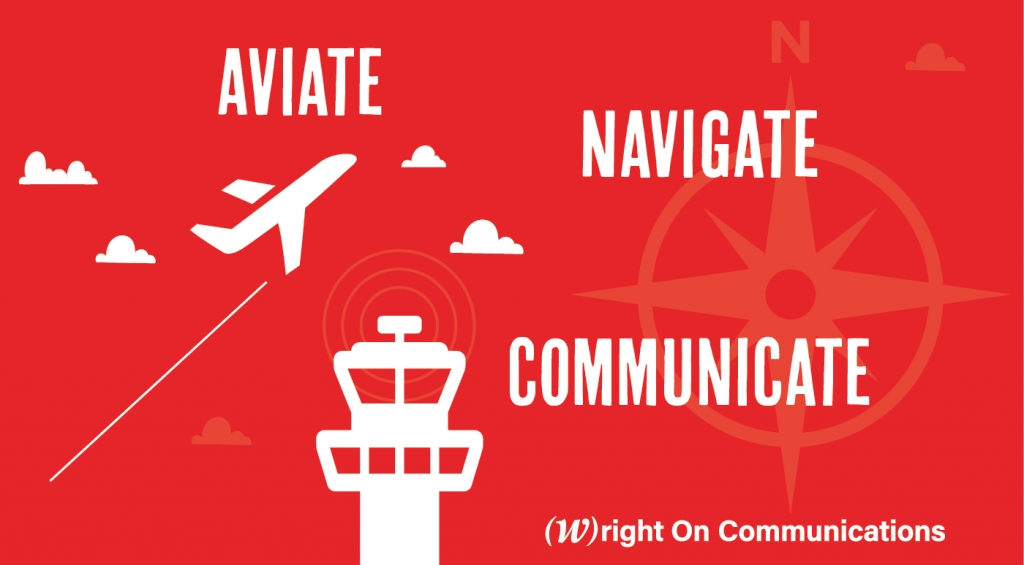When I learned to fly, my instructor beat into my head a simple phrase: “Aviate. Navigate. Communicate.” The idea is simple but powerful. First, fly the airplane. Then, figure out where you’re going. Last, tell someone.
It speaks to priorities.
There’s little sense in figuring out how you’ll get from A to B if you haven’t corrected the nosedive that’s about to render your flight obsolete. And once the plane is stable, there’s little point chewing up valuable mic time until you know where you’ll next point the plane to conclude the flight safely. Pilots have unfortunately been so distracted with their heads deep in a map or talking with controllers that they failed to notice the fuel gauge or mismatched engine readings at the root of their problem.
In the years since my training, I’ve realized this lesson applies to so many other areas of our lives. In this unprecedented time of a worldwide pandemic, it’s easy to get caught up in talking about the drama without realizing we’re not yet actually taking the priority actions. Case in point, our President bungling his communications while not yet role modeling the avoidance of handshakes let alone practicing social distancing. Or our Vice President prioritizing the lavishing of praise on our President versus using all of his precious communication time with an audience of millions to relay information people actually need.
In times of crisis, there can be a tendency to subordinate communications in favor of less important things. But other than remembering to actually fly the plane and figure out where you’re going, communication is the third most important thing to do! Aviate. Navigate. Communicate.
In business, this means quickly stabilizing things to a new but temporary operational norm and planning next steps to emerge as strongly as possible once things play out. By definition, both need solid communications to achieve. And solid communication also means, for example, adapting marketing messages now to avoid tone deaf messages because they were programmed three months ago; acknowledging fears and anxiety; and contributing helpful information into the national discourse when possible. It also isn’t the time to attempt distracting news desks with an unrelated PR hook for brand mentions that don’t help. In other words, now is not the time for newsjacking the coronavirus.
With operations and planning in hand, communication itself then becomes the next most important focus. Those organizations that move more quickly than others through the grief stages will emerge stronger than those organizations that act like a deer in headlights.
While the current pandemic is an unprecedented threat, and events are playing out with startling speed to which we’re simply not accustomed, it isn’t hyperbole that we’ll get through this. Unprecedented action is being taken the world over and ‘this too shall pass’.
At (W)right On, we’re assisting our client partners with their temporary operational adjustments and plans development. Communication isn’t slowing, it’s being redirected to support the aviate and navigate priorities. But recognizing that as inevitably as the wave is coming it will recede, and that post-pandemic attention for marketing messages will be a scarce resource, some are already beginning to explore more creative communications to take advantage of competitive opportunities to emerge. With solid aviation and navigation in place, our client partners are already planning to increase marketing communication in the weeks and months ahead to ensure that, as the wave passes, they are poised to protect and increase their market position. Like those that wait to deal with operations and navigation, organizations that unduly subordinate or arbitrarily delay marketing communications won’t do as well.
Pundits are hoping for a slow smolder in the USA with a peak to come in the months ahead after which life will begin returning to a new normal. In the marketing communications world, this timing is relatively imminent. It heightens the importance of not only embracing communications now to effectively aviate and navigate, but embracing communications to, well, communicate.
At (W)right On, we’re solidly behind our client partners and team members to move through this together, and following the guidance of experts and community leaders to ensure we help remain part of the solution. Comment below and/or let us know how you’re adapting your communications to rise to the occasion called of all of us, and to rise to the opportunities that will inevitably emerge as the wave passes.
ABOUT THE AUTHOR: As CEO and Managing Partner, Grant provides oversight and senior-level communications and business counsel for the agency’s client partners while also overseeing agency management and administration. Grant Wright has more than 30 years of senior management experience including external affairs and business development leadership roles for major American and Canadian corporations and their subsidiaries. With extensive skills in all aspects of communications including media, regulatory, governmental, community outreach and labor relations; he has also led major infrastructure project development, M&A due diligence and implementation management, marketing and brand development, strategic planning and business plan development for small through Fortune 500 companies.














